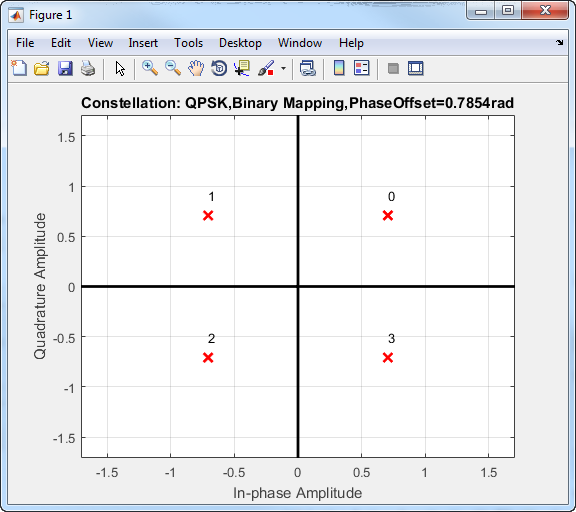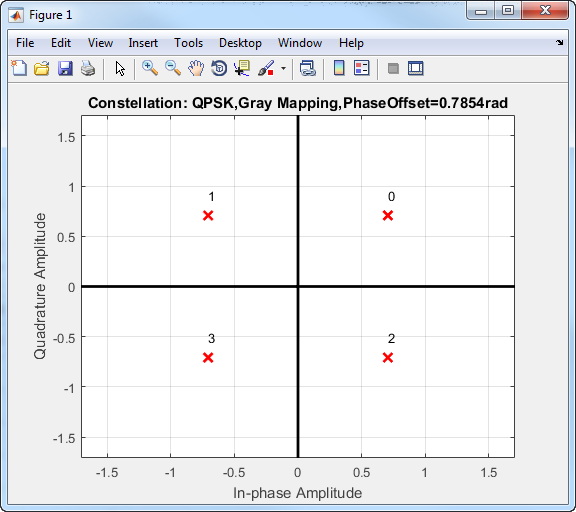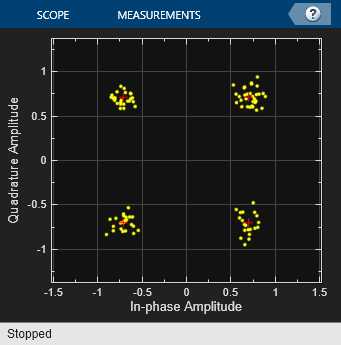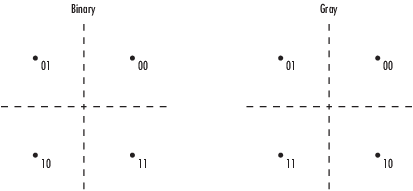QPSK Modulator Baseband
Modulate using quadrature phase shift keying method
Libraries:
Communications Toolbox /
Modulation /
Digital Baseband Modulation /
PSK
Communications Toolbox HDL Support /
Modulation /
PM
Description
The QPSK Modulator Baseband block modulates signals using the quadrature phase shift keying (QPSK) method. The output is a baseband representation of the modulated signal. This block accepts a scalar or column vector input signal. For information about the data types, see Supported Data Types.
Examples
Ports
Input
Output
Parameters
Block Characteristics
More About
Algorithms
In quadrature phase shift keying, the message bits are grouped into 2-bit symbols, which are transmitted as one of four phases of a constant amplitude baseband signal. This grouping provides a bandwidth efficiency that is twice as great as the efficiency of BPSK. The general QPSK signal is expressed as
where Es is the energy per symbol, Ts is the symbol duration, and ϕ is the initial phase offset. The complex baseband representation of a QPSK signal is
In this QPSK constellation diagram, each 2-bit sequence is mapped to one of four possible states. The states correspond to phases of π/4, 3π/4, 5π/4, and 7π/4.

To improve bit error rate performance, you can map the incoming bits to a Gray-coded ordering. The primary advantage of the Gray code is that only one of the two bits changes when moving between adjacent constellation points. This table compares constellation point sequences for binary and Gray mapping.
| Binary-Coded Sequence | Gray-Coded Sequence |
|---|---|
| 00 | 00 |
| 01 | 01 |
| 10 | 11 |
| 11 | 10 |
You can apply Gray codes to higher-order modulations, as shown in this Gray-coded QPSK constellation.

The bit error probability for QPSK in AWGN with Gray coding is
which is the same as the expression for BPSK. As a result, QPSK provides the same performance with twice the bandwidth efficiency.
Extended Capabilities
Version History
Introduced before R2006a
See Also
Blocks
- QPSK Demodulator Baseband | M-PSK Modulator Baseband | BPSK Modulator Baseband | DQPSK Modulator Baseband







